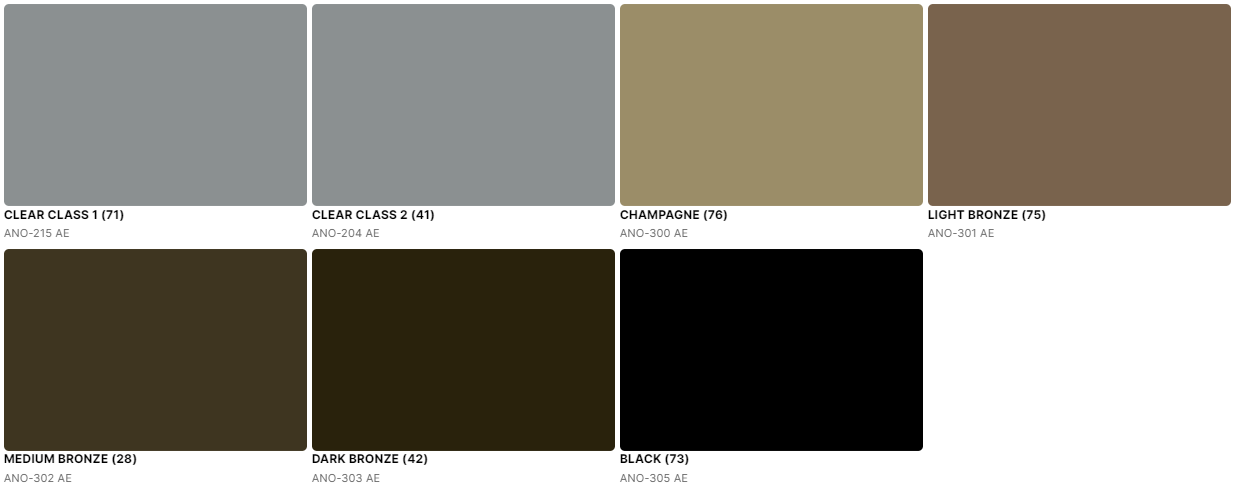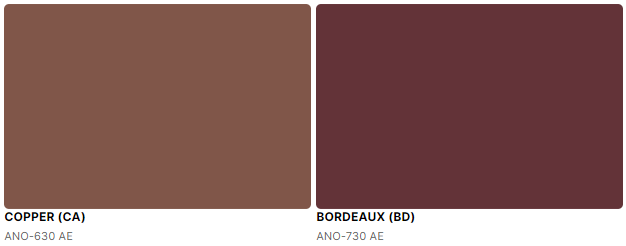Anodized advantage: Understanding the benefits and options
For the highest performance finish on aluminum framing systems, choose Class I anodize.
 Curtainwall, storefront, windows and entrance doors’ exterior framing members endure continual exposure to weather and wear. On the interior, framing within reach is subject to scraps and scratches from people’s hands, feet, seats, bags and devices.
Curtainwall, storefront, windows and entrance doors’ exterior framing members endure continual exposure to weather and wear. On the interior, framing within reach is subject to scraps and scratches from people’s hands, feet, seats, bags and devices.
When protection is the priority, anodized finishes provide your project’s Alumicor aluminum building envelope systems with an extremely durable, hard surface that is colorfast and mar resistant.
What is anodize and how do you spec it?
Architectural anodize creates an extremely durable integral coating with exceptional hardness that is comparable to a sapphire. The anodization process increases the natural protective oxide layer on aluminum. By electrochemically controlling, accelerating and enhancing oxidation of an aluminum substrate, anodizing produces an oxide film that is uniform and protects the rest of the aluminum from deterioration.
For architectural building products such as curtainwall, storefront, windows and entrance doors’ framing, AAMA 611 Voluntary Specification for Anodized Architectural Aluminum is the industry-leading specification standard. Published by the Fenestration and Glazing Industry Alliance (FGIA), this document references The Aluminum Association’s “Designation System for Aluminum Finishes” Anodic Coatings classifications: Architectural Class I and Architectural Class II.
 The main difference between these two classifications is the coating’s dry film thickness. An Architectural Class II anodic coating has a minimum mil thickness of 0.4 (10 microns) and an Architectural Class I anodic coating is almost twice as thick with a mil thickness of 0.7 (18 microns) or greater.
The main difference between these two classifications is the coating’s dry film thickness. An Architectural Class II anodic coating has a minimum mil thickness of 0.4 (10 microns) and an Architectural Class I anodic coating is almost twice as thick with a mil thickness of 0.7 (18 microns) or greater.
As the thinner finish, an Architectural Class II anodic coating generally is suited for interior applications or light exterior applications receiving regularly scheduled cleaning and maintenance. While Class II coatings offer good hardness, they are not as durable or wear resistant as a Class I finish. Alumicor only offers Class II anodize in clear and recommends it exclusively for interior applications.
An Architectural Class I anodic coating is a high-performance finish used primarily for exterior building products and other applications that must withstand continuous outdoor exposure or use. AAMA 611 requires Class I to pass 3,000 hours of accelerated salt spray testing compared to 1,000 hours for Class II. Class I anodize finish’s proven performance demonstrates it is well-suited for coastal environments and high-traffic areas.
What are the benefits of anodize?
Specified to meet AAMA 611, Class I anodize finishes retain their color and gloss, and provide excellent wear and abrasion resistance with minimal maintenance in most environments. Anodized aluminum is an inert material that is non-combustible, is 100% recyclable and poses no health risks. These inherent qualities making it a smart choice for projects with environmentally friendly building initiatives such as LEED® certification.
To ensure optimal performance, appearance and sustainability, Alumicor partners with Linetec as our single source solution for architectural finishing. Linetec is 100% compliant with all applicable AAMA specifications, including AAMA 611. It’s eco-friendly anodize process also significantly reduces the energy and waste compared to previous anodize methods. These environmental benefits are further enhanced when paired with secondary, recycled aluminum material. At the end of its long life on the building, the aluminum can be 100% locally recycled.
What color options are available for anodize?
Alumicor’s environmentally friendly anodized aluminum framing has a smooth, uniform finish with a frosty, matte appearance. “Clear” anodize is an uncolored finish that highlights the natural, silver tone of the aluminum.
After anodization, the aluminum parts can be immersed in optional coloring tanks. Anodize colors typically range from champagne to dark bronze to black. Darker colors are created by extending the immersion time and increasing metal deposition.
Alumicor offers six standard colors of anodized finishes:
- Clear
- Champagne
- Light Bronze
- Medium Bronze
- Dark Bronze
- Black

Beyond the standard palette, Alumicor also offers three premium options:
- Extra Dark Bronze
- Copper
- Bordeaux

While anodized aluminum’s color options are limited, its performance is proven. You can be confident you’ve selected the highest performance finish when you specify AAMA 611 Class I architectural anodize for Alumicor’s aluminum framing systems. Please contact your client development manager for personalized assistance in selecting and specifying anodized finishes for your project’s Alumicor products.
SHARE



